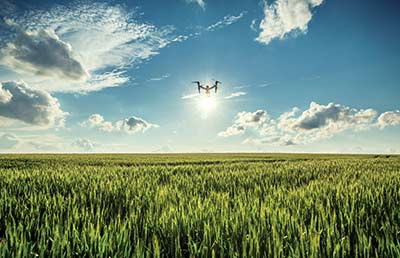Will Interest Rate Increase Equal Lower Land Values?

They showed the percent change in farmland values from the previous year for the Chicago, Dallas, Kansas City and Minneapolis Federal Reserve districts which includes most of the corn belt plus Texas and Mountain states. The average increase in values for most of the states in these districts was between 20-25% for the year.
However, the trend in the latest quarter appears to be decelerating. The last quarter of 2021 showed a 7-10% increase in land values, however, the first quarter of 2022 showed this increase dropping to between 2-4%.
The largest annual increase was actually in the Mountain states of Wyoming, Colorado and parts of New Mexico with a 32% increase. Iowa, North and South Dakota, Minnesota, Nebraska, Kansas, Texas, Western Missouri and Northern Indiana were all at least 22% higher.
Average land loan rates started to tick up in the first quarter and if we continue to see the Federal Reserve increase rates, we are likely headed for a possible reduction in farmland values during the rest of 2022. How much is unknown, but we know that mortgage rates for homes are up at least 2% from around 3% to about 5.5%.
Let’s find out how farmland values may adjust based on long-term rates going up by 250 basis points. Let’s assume that good farmland in Iowa is going for $15,000. The net cash return in 2021 was about $350 on this land (an assumption). This results in a rate of return of about 2.3%. If the only change in expectations for the land investor is the increase in interest rates, this means now the investor will want about a 4.5% rate of return. Let’s assume that net income might be closer to $400 in 2022. This would result in values of about $8,700 ($400 divided by 4.5%).
Now many farmland investors might be paying cash for this land and their return requirement might still be closer to 2-3%. For those investors, they might still be willing to pay $15,000, however, the other investors may not want to go that high. This could lead to a reduction in values.
It is still early in 2022 and we need to see how far the Fed goes and how high land loan rates go up before we will know for sure. But it is good to see how expectations on certain investors can change land values and the reduction can be dramatic.
Paul Neiffer is a certified public accountant and business advisor specializing in income taxation, accounting services, and succession planning for farmers and agribusiness processors. Paul is a principal with CliftonLarsonAllen in Walla Walla, Washington, as well as a regular speaker at national conferences and contributor at agweb.com. Raised on a farm in central Washington, he has been immersed in the ag industry his entire life, including the last 30 years professionally. Paul and his wife purchase an 180 acre ranch in 2016 and enjoy keeping it full of animals.

Paul,
With Bond rates moving up significantly due to the projected, and thus far the moves of the fed, wouldn’t a 2-3% return on farmland with cash be a relatively poor investment from a tax and return perspective? I can locate some 3.5%-4% muni bonds right now and save the taxes, giving me a tax equivalent return of 5-6%. I feel like with these other options, it will move investors away from farmland, because you aren’t likely to get much appreciation in farmland and no where near the 5% return on cash rents, let alone if it where custom farmed or on shares over the long term. Curious on your thoughts. I feel that farmland is setting up for a corrective move, we just haven’t realized it yet.